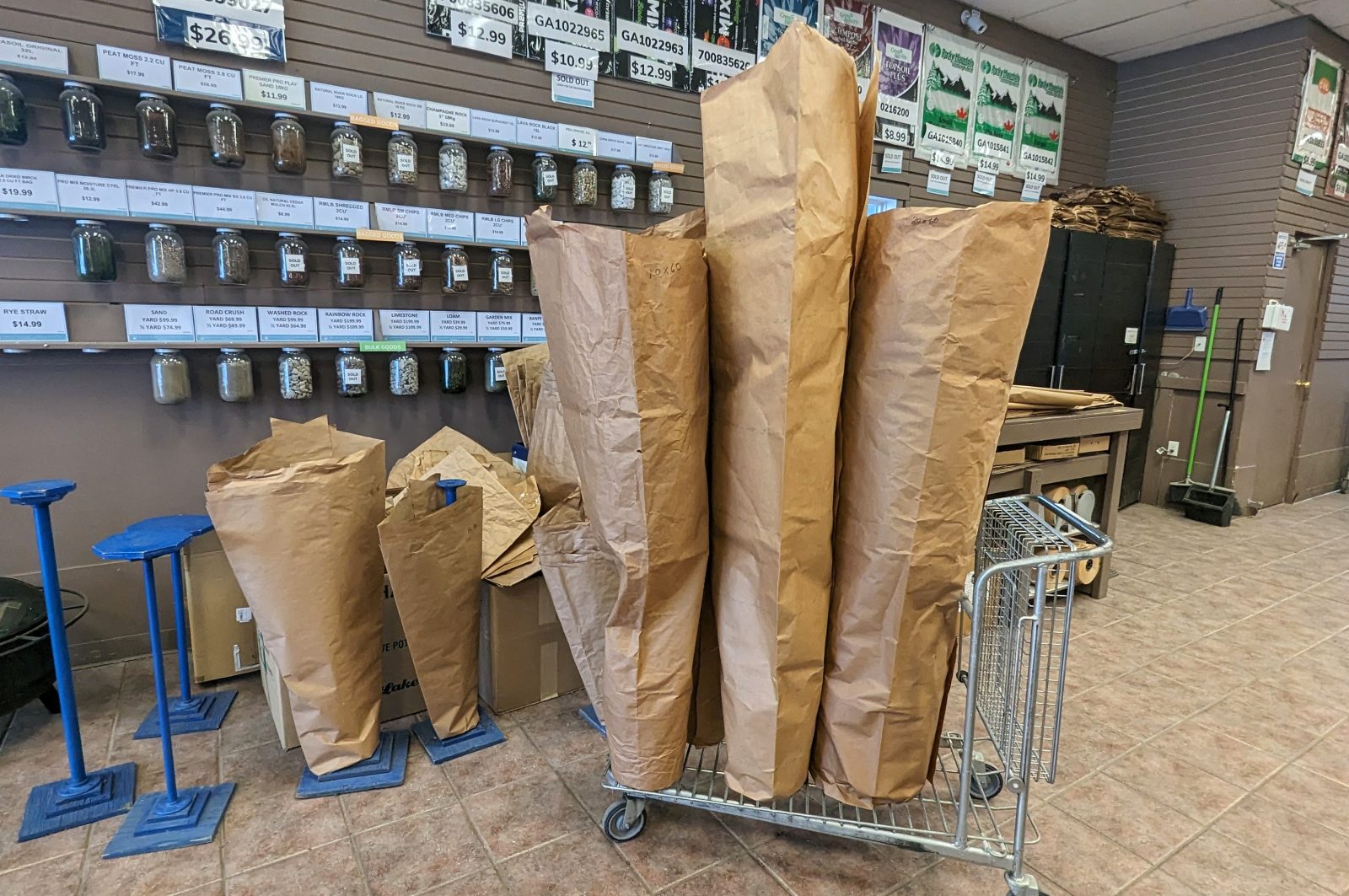The term ‘polar vortex’ may have been living rent free in your brain the last couple of weeks. As temperatures plunged across the country, we saw people doing boiling water to throw into the air, people eating frozen noodles, and toilet paper sculptures. In this episode, we explore how this extreme weather event impacts our gardens and houseplants? We’ll also uncover a hidden tropical paradise in Calgary, and talk about domesticating bugs.
What is a ‘Polar Votex’?
Other than residing in headlines across North America this month, the polar vortex mainly resides over the two polar regions on Earth. It’s a low pressure system containing very cold air and is strongest during the winter season. Sometimes, the circulation of this vortex is disrupted by high pressure systems and produce cold waves that ‘leak’ away from the poles. Recently, the northern polar vortex sent frigid air dipping into Canada and the US. Parts of Alberta saw the coldest temperatures, at times -38C without the wind chill!
Learn moreImplications on the Garden
Perennials
Perennials are sleeping underground during the winter months, so they should be okay during a polar vortex. You may need to keep an eye on new perennials that were planted late last year as their roots may not have established deep enough to survive an extreme weather event like this. Wait until spring, and if you don’t see it come up, you may need to dig it up and start over.
Trees & Shrubs
Mature trees have deep roots that are well insulated underground during winter hibernation. Newly planted trees are at risk of damage. Unfortunately, it’s a waiting game. In the spring, monitor your trees and shrubs. When you see bud break, see what sections are growing and which are not. To confirm if a branch is dead, perform a ‘scratch test’. If you see green under the bark, it’s a alive!
‘Frost Cracks’
Vertical cracks may form during rapid expansion and contraction of water within the wood and bark of a tree. These are more common in areas that experience dramatic temperature swings such as Calgary with their chinooks.
Learn more about Sunscald and Frost CracksBirds
As wild animals, birds are resourceful during these extreme weather events. However, supplying a food and water source will give them a hand and encourage them to visit come spring. Bird seed in a feeder is always appreciated, but water can be more of a challenge, right? Everything is frozen and the snow is even close to melting point. There are heated bird baths on the market, but they could also fail in extreme cold temperatures. Consider filling up a shallow container a couple times a day. Even if it freezes in half and hour, the birds will adjust their schedules around what’s available and when.
Bugs & Disease
Deep cold can eliminate many of the bad bugs, but can also take out the good ones too. Remember that pile of debris you left in your yard last fall? That pile has become the greatest ‘bug hotel’ and the snow will help insulate and keep those bugs warm.
Surprise Mention: Tardigrade
This organism can live pretty much anywhere on earth. They’re tiny and tough… tough enough to survive the harsh conditions of space for 10 day!
Soil Quality
Quality of soil including nemotodes.
Implications on houseplants
Getting them Home
Here at Golden Acre, like most garden centres, we wrap houseplants when temperatures dip below 5-10 degrees Celsius. If you think about where houseplants naturally reside, it’s warmer places like Mexico and Florida. It can be dangerous for tropical plants to go outside without any sort of protection. It’ll shock them! You know when you come home after a winter trip to Mexico and you have to dress for the destination? Same thing here. By wrapping your plants, you’re trapping heat inside long enough for you to get home.
Home Care
At home, make sure houseplants are away from doors and windows, especially in a home with older windows. A cold draft, or frost covered glass, can invite colder air to sit around your houseplants and shock them. Thankfully, a polar vortex typically only lasts a week or two. Once it passes, you can invite those plants back into their spots. ** Growlights

Hypothetical Question of the Week….
If you could choose any bug to become the size of a domesticated pet, which one would it be?
———————————————————–
*************************
CONNECT WITH US
Thank you so much for supporting our podcast and for making the world a more planty place. Please subscribe, leave a rating or review and listen in for new gardening discussions every week!
Subscribe to our show on Spotify, Apple, and Google
Leave an anonymous voicemail and be featured on the show!
Instagram / Facebook
Email us info@goldenacre.ca (SUBJECT: PODCAST)

